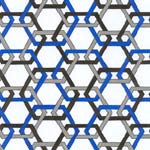
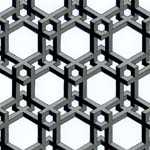
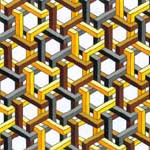
Figure 12
Figure 13
Figure 14
Some drawings of tiling-lattices or connected contours can easily be transformed to real three-dimensional constructions. Some tilings that occur frequently in Islamic decoration are a rich source for this exercise. It is not uncommon for these to appear as interwoven tiling-lattices. The hexagonal rings that are interwoven in Figure 12 can be viewed as projections of cubic elements. Figures 13, 14, and 15 show different examples of how the structural pattern of Figure 12 can be worked out as a three-dimensional mesh of congruent linked three-dimensional forms whose edges trace out six edges of a cube.
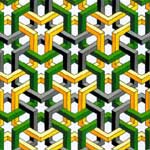
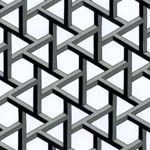
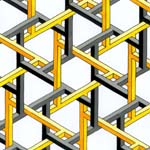
Figure 15
Figure 16
Figure 17
We can also begin with a two-dimensional tiling-lattice and turn it into an impossible three-dimensional construction. In Figure 16 a tiling-lattice is shaded so it appears three-dimensional and forms an impossible structure: a scaffold of Penrose tribars. We can even make interwoven impossible structures: two of these are shown in Figures 17 and 18. Beginning with the same two-dimensional interwoven lattice in Figure 12, by a different shading we can also produce an impossible interwoven mesh of Penrose tribars, as in Figure 19. Although Figure 20 looks very different, it is produced by beginning with the same tiling-lattice from which Figure 19 was derived. It is interesting to compare the impossible three-dimensional mesh in Figure 21 with the Islamic design in [1, p. 155].
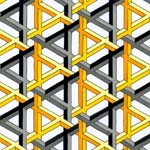
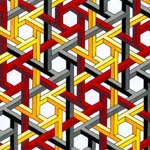
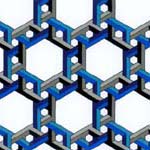
Figure 18
Figure 18a
Figure 19
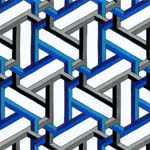
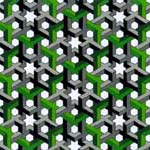
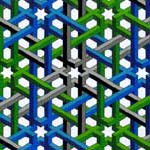
Figure 20
Figure 21
Figure 21a